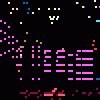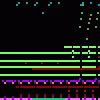Comments
Muhngkee - Intertwined
Comments
mohnkey moment
reminds me of shifting through by vlad
Playing an instrument and ear training apps can help to improve this skill. And unless you strictly want to compose something using functional or nonfunctional harmony, i'd just figure out the quality of the chord I want to use, the root of the chord and from there decide how I want to utilize it in a composition. Also, if you hear something you think sounds cool: analyize it.
...theoretically with it and are able to translate it into some form of music, you are able to able to quickly make music that (at least for you) sounds satisfactory. To get to this point i'd suggest listening to the type of music that you want to compose in to the point where you can improvise in that style in your head. For translating, i'd suggest familiarizing with note pitches (pitch memory and relative pitch) chord qualities (e.g differentiating a dim. chord from an aug. chord). and time signatures.
Before I started to compose this thing, I knew that I wanted to make something polyrhythmic. I had a good understanding of how the piece should go melodically, harmonically and rhythmically. I am able to translate the ideas in my head fairly well into musical notation, which really helps speeding up the process and not forgetting ideas by getting distracted by something out of place. If you are able to plant 'musical seeds' in your head that are very detailed, have a good understanding of what's going on
Thanks. How do you even compose something like this? I've been trying to learn theory, but there isn't much for chord relations outside of a functional context. Certain chord changes have effects I want, but without some sort of framework, it can be hard to find them. I guess modal harmony comes the closest.
I don't think there is much of a case of functional harmony here, becuase the chord progressions do not revolve around one tonic center. Each chord is treated as its own tonal center.
What we have here are a bunch of Maj7 chords; some with further chord extensions that follow the lydian mode based of the root of the chord being played. The melodies also play lydian over each chord in a way that gives every chord a bit of a Maj7#11 quality. This piece uses a lot of chromatic modulation (switching to a key that is not closely related to the one currently being played), and the chord extensions in combo with the melody that smoothly modulates the same motifs help smoothen the changes out.
Can you explain the harmony here? It's not really functional is it?
This is one of my favourites
(16 instead of 32)
Wanted to play around with polyrhythms. This piece uses a 32:7:6 polyrhythm.
Link to this sequence: 1187857
Simple
Advanced
Synthesizer
Instrument name
Copy
Load
Clone
Delete
Mute
Solo
Reset
Volume
Delay
Panning
Detune
Reverb
Distort
Equalizer
High
Mid
Low
Bitcrusher
Synth name
Resonance (Q)
LFO
1/4
Envelope
A
D
S
R
Edit Markers
Settings
BPM
Title
Instrument
- Select/deselect notes
- Select/deselect markers
- Save a copy
- Save offline
- Export MP3
- Export WAV
- Export MIDI
- Import MIDI/Sequence File
- Fast graphics
- Invert
- Minor ⇄ Major
- Reverse Selection
- Humanize Selection
- Legatomize Selection
- Fade In Selection
- Fade Out Selection
- Stretch Selection
12
Connect a MIDI keyboard.
Record keyboard and MIDI inputs.
Snap recorded notes to the grid.
Filter recorded notes using the key guide.
Play a metronome. When recording, gives a 4 beat lead in.
OnlineSequencer.net is an online music sequencer. Make tunes in your browser and share them with friends!
Made by Jacob Morgan and George Burdell
·
Hosting 4,169,508 sequences since 2013 ·
Buy us a ☕ ·
Privacy
·

































♩♪♫♪♬♩♩11/2/20 9:06